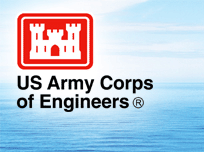|
|
|
Great Lakes & St.Lawrence Seaway Study
|
|
.jpg)
Copyright Harpor House Publishers, Inc., Boyne City, Mich. Used with permission. Details of the map: The St. Lawrence Seaway proper extends from Montreal to Lake Erie. The Montreal/Lake Ontario section encompasses a series of seven locks over roughly 300 kilometres (187 miles) – five Canadian and two American – from Montreal, Quebec to Iroquois, Ontario enabling ships to navigate between the St. Lawrence River and Lake Ontario. The Welland Canal links Lake Ontario and Lake Erie with a series of eight locks over approximately 42 kilometres (27 miles) – all Canadian. The Welland Canal provides more than half the lift needed between tidewater and the lakehead. All of the seven locks of the Montreal/Lake Ontario section of the Seaway (St. Lambert, Côte Ste. Catherine, Lower and Upper Beauharnois, Bertrand H. Snell, Dwight D. Eisenhower and Iroquois) as well as those of the Welland Canal, are 233.5 metres long (766 feet), 24.4 metres wide (80 feet) and 9.1 metres deep (30 feet) over the sill.Further to the northwest are the Soo locks at Sault Ste. Marie, Michigan, which provide a vital connection between the upper Great Lakes and Lake Superior. Access to Lake Superior and the Canadian lakehead at Thunder Bay, Ontario and the U.S. lakehead at Duluth, Minnesota is gained via the locks on the St. Mary’s canal, which are administered by the U.S. Army Corps of Engineers.The two locks currently operational for commercial navigation purposes are the Poe and the MacArthur. The Poe lock is 1200 feet long (366 metres), 110 feet wide (33.5 metres) and 32 feet deep (9.8 metres). The MacArthur lock is 800 feet long (244 metres), 80 feet wide (24.4 metres) and 31 feet deep (9.4 metres). The Great Lakes/St. Lawrence Seaway Study (GLSLS Study) is a joint effort between the United States and Canada. The GLSLS Study partnership involves the following organizations.

- U.S. Army Corps of Engineers
- Transport Canada
- U.S. Department of Transportation
- St. Lawrence Seaway Management Corporation
- Saint Lawrence Seaway Development Corporation
- Environment Canada
- U.S. Fish and Wildlife Service
The GLSLS Study was formally initiated in May 2003 after a Memorandum of Cooperation (MOC) was signed between Transport Canada and the U.S. Department of Transportation that facilitated a bi-national study partnership. The MOC enhances collaboration between both governments, and helps them to: - Assess the economic, environmental and engineering factors associated with the current and future needs of the Great Lakes St. Lawrence Seaway commercial navigation system;
- Identify factors and trends affecting the domestic and international marine transportation industries serving the Great Lakes St. Lawrence Seaway, including evolving intermodal linkages and transportation technologies; and
- Evaluate the reliability and condition of the Great Lakes St. Lawrence Seaway, including the ongoing maintenance and capital requirements of sustaining and optimizing the existing marine transportation infrastructure on which it depends.
|
|
|
|
|
|
|
|
|
|
|
|
|


